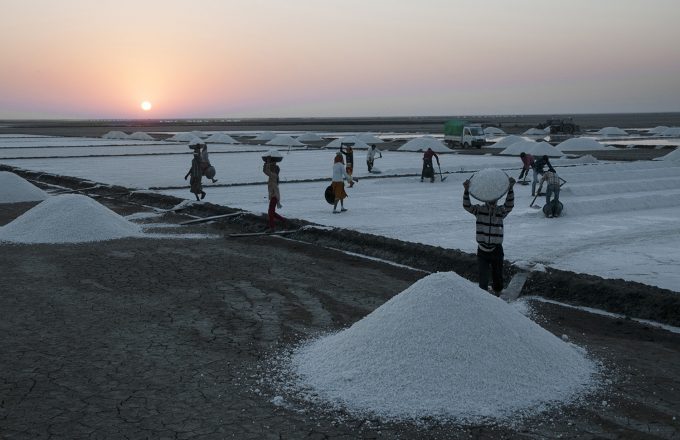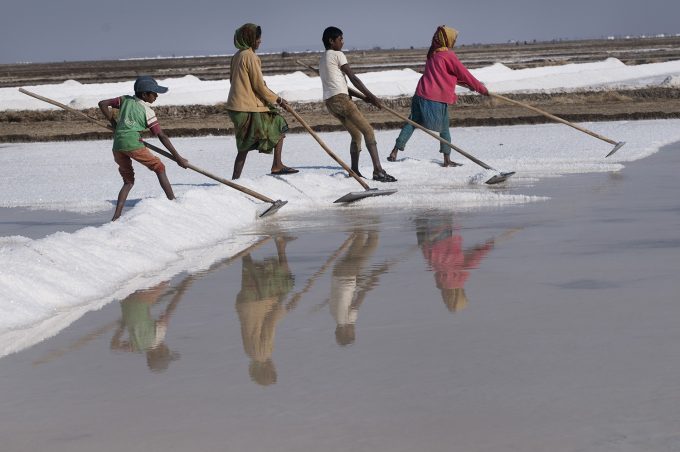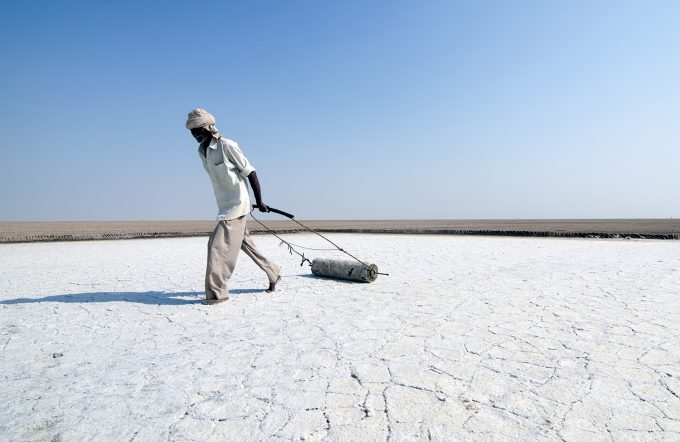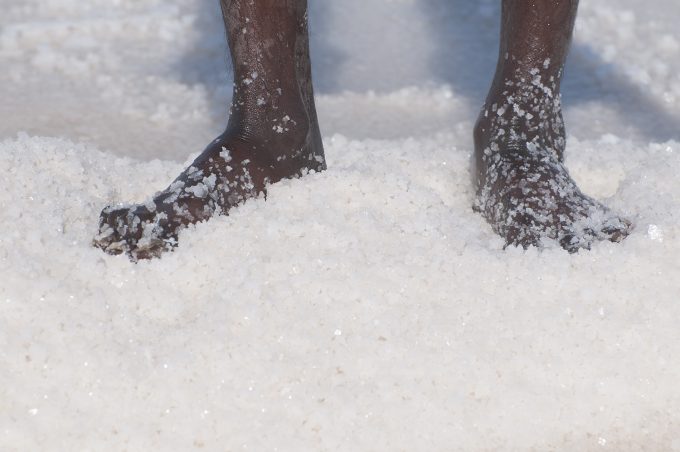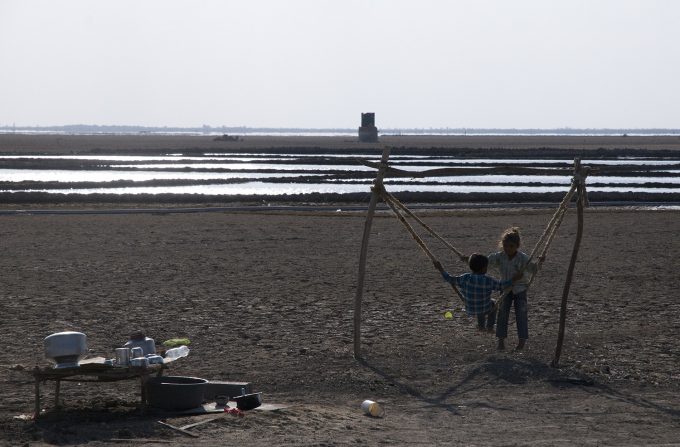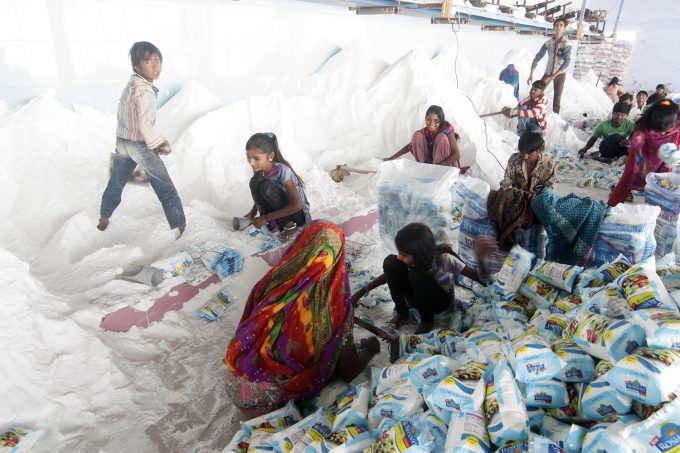Harvesters of the White Desert
Abhaben’s shack, her home in the Rann of Kutch for eight months a year, is built of jute bags and plastic sheets. Partially shaded by a lone acacia tree, it houses seven members of her family. Adjacent to the shack lie four salt pans, managed by Abhaben’s in-laws for generations. Beyond the shack stretches an endless expanse of sun-dried mudflats, crackled and punctuated by salt pans. Beside each stands another solitary shack.
Abhaben is an Agariya woman, living in the Dhrangadhra salt zone of India’s Thar Desert. The Agariyas have lived and worked here for centuries, plying just one trade: salt production. They work day in and day out under a fierce sun. From October to June, the Agariyas grow salt in square-shaped salt pans, harvesting 75% of India’s annual total.
Mukeshbhai, Abhaben’s husband, looks troubled. The season’s price for salt has been fixed at a measly 200 rupees per ton (just under $3 USD) by the salt merchants. Last year, he took a loss, even at a rate of 210 rupees per ton. Generationally indebted to the salt merchants, both for producting the crop and for the provision of their food and living expenses, the Agariyas have no choice but to sell off their salt before the start of a each year’s fresh season. “We do not get crop insurance, bank credits, or even government support prices,” Mukeshbhai tells me. He’s 36 years old, but his weather-beaten face looks much older.
In the monsoon months, the Rann of Kutch is submerged in sea water. As the water starts to recede in October, the Agariyas move in to begin their herculean task. They dig wells to pump out the briny groundwater and fill the square-shaped fields, where natural evaporation will leave behind the valuable white crystals. In winter, when the harvest season begins, the salt fields will be silvery white with raw salt. Relentless, 100° days often give way to nighttime temperatures in the 30s and 40s through the 7 or 8 months of each year that the Agariyas live in the shacks beside their salt flats. Children forego school, starting their labor in the salt pans around age 10.
Each salt pan yields between 12 and 15 tons every 15 days during the harvest. The product is sent to salt companies and chemical factories across the country, fetching a market price of approximately 4,000 rupees per ton. The Agariyas’ earnings are less than 5% of the industrial market price of their harvest.
The low income level and lack of education facilities in the barren desert of the Rann offer few chances for the children of saltpan workers to escape a cycle of poverty and poor health. Recently, the salt farming community has been confronted by another problem: the salt plains have been converted to a sanctuary for the endemic Asiatic Wild Ass, and the salt farmers were served eviction notices in 2006. The Agariyas are working in a sort of legal limbo. “Ironically, the population of endangered wild asses has increased manifold, from less than 300 to about 5,000 in last 50 years,” says Devjibhai Dhamecha, a conservationist and Agariya. He continues, firmly, “The authorities fail to understand that wild asses cannot survive in the harsh desert where the salt pans are located. They dwell around the Agariya villages in the periphery of the desert and face no threat from our community.” Now, with no rights to control the land they have harvested for centuries, the Agariyas are trying to obtain traditional user rights for salt farming under India’s Forest Rights Act.
This work will exact another price on the Agariyas: working for years in harsh desert conditions wreaks havoc on their health. According to a study conducted by the National Institute of Occupational Health (NIOH), Ahmedabad, the salt farmers suffer from skin lesions, severe eye problems (due to the intense reflections off the white salt deposits’ surfaces), and tuberculosis. A salt worker of Kutch seldom lives beyond 60 years. In fact, when Agariyas die, their abnormally thin legs, stiff with years of exposure to highly saturated salt, will not burn in the funeral pyre. Their legs will be collected by their relatives, buried, with salt, in a small grave to decompose naturally.
